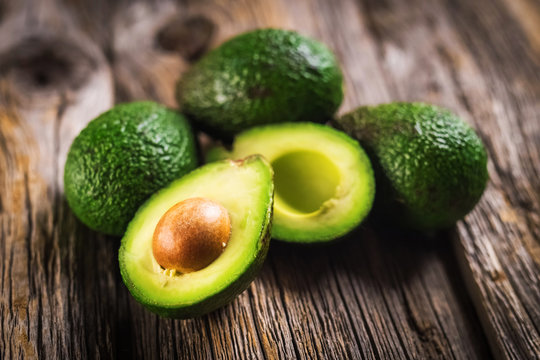Hyperpigmentation is a widespread Australian skin condition in which the sun’s excessive exposure has a critical effect on skin health. Inflammation, hormonal imbalance, and sun damage lead to dark spots, making it essential to have a great hyperpigmentation treatment plan. This manual offers expert-approved tips, best skin care products, and treatments that can help Australians fight irregular skin tone and look brighter.
Understanding Hyperpigmentation and Its Causes
What is Hyperpigmentation?
Hyperpigmentation is excessive melanin production, the skin’s pigmenting agent, in certain areas. Dark spots and irregular skin tone are the outcome. Although harmless, it is difficult to cure and manage, particularly in areas exposed to the sun like Australia.
Common Causes of Hyperpigmentation
- Sun Exposure: Excess melanin production due to UV radiation leads to sunspots and discolouration.
- Hormonal Fluctuations: Melasma occurs due to hormonal imbalance and is prevalent among pregnant women and pill users.
- Post-Inflammatory Hyperpigmentation (PIH): Acne, cuts, or irritation leads to dark spots, which take months to clear up.
- Genetics: Some are more susceptible to pigmentation disorders due to genetic reasons.
Why is Hyperpigmentation Worse in Australia?
Australia boasts some of the world’s highest levels of UV radiation because of the ozone layer depletion. This heightens the risk of pigmentation disorders and skin damage. Even on cloudy days, UV rays are strong enough to penetrate and make hyperpigmentation worse. Preventive measures must be taken to prevent the skin from getting damaged and mitigate the effects of excess sun exposure.
Effective Hyperpigmentation Treatment
1. Sun Protection: The Most Important Step
Preventing further pigmentation is the solution. Everyday application of sunscreen is the initial line of defense in any treatment plan for hyperpigmentation.
- Use a Broad-Spectrum Sunscreen (SPF 50+): Australian dermatologists advise high SPF to prevent damaging UV rays.
- Reapply Every Two Hours: This is Especially if outdoors for an extended period.
- Wear Protective Clothing: Hats, sunglasses, and UPF-rated clothing reduce sun exposure.
2. Best Serums for Hyperpigmentation
Topical treatments are an effective means of treating discolouration. Incorporating the best serum for hyperpigmentation into a skincare routine can speed up results.
Key Ingredients to Look For
- Vitamin C: A powerful antioxidant that brightens the skin and lessens pigmentation.
- Niacinamide: Evens out the skin tone and tightens the skin barrier.
- Alpha Arbutin: Blocks melanin formation and erases dark spots.
- Retinol: Stimulates cell turnover and encourages collagen formation.
- Azelaic Acid: Soothes inflammation and is suitable for sensitive skin.
Selecting a serum for hyperpigmentation depends on the skin type. Those with oily or acne-prone skin can use light, non-comedogenic formulas, while those with dry skin use hydrating formulas.
3. Professional Hyperpigmentation Treatment
Professional treatments might be needed for persistent pigmentation. These should be conducted by trained dermatologists or skin specialists in Australia.
Chemical Peels
Chemical exfoliation using AHAs or BHAs peels the skin surface, giving it a more even appearance.
Laser Therapy
Treatments such as Fraxel and Q-Switched lasers target deeper pigmentation and work well for sun damage and melasma.
Microneedling
Stimulates collagen production and smoothes skin texture, fading pigmentation over time.
Prescription Treatments
For extreme cases, dermatologists can prescribe hydroquinone or tretinoin under professional guidance.
The Best Skincare Routine for Hyperpigmentation
Morning Routine
- Gentle Cleanser: Cleans dirt and oil without drying the skin.
- Vitamin C Serum: Prevents oxidative damage and brightens the skin.
- Niacinamide or Hydrating Serum: Reduces redness and maintains the health of the skin.
- Sunscreen (SPF 50+): Prevents further pigmentation.
Night Routine
- Double Cleanse: Clears sunscreen residue and makeup.
- Exfoliate (2-3 times a week): AHAs or BHAs to eliminate dead skin cells.
- Retinol or Alpha Arbutin Serum: Fades dark spots over time.
- Moisturizer with Ceramides or Hyaluronic Acid: Hydrates and seals skin.
Common Mistakes to Avoid
- Omitting Sunscreen: UV exposure makes pigmentation worse and reverses treatment gains.
- Over-Exfoliating: Harsh scrubs or excessive application of acid irritates the skin and causes further pigmentation.
- Using Too Many Actives at One Time: Mixing intense ingredients without experience causes irritation and inflammation.
- Squeezing the Skin: Popping or touching acne and dark spots causes post-inflammatory hyperpigmentation.
FAQs on Hyperpigmentation Treatment in Australia
How Long Does Hyperpigmentation Treatment Take?
- Results are uncertain based on pigmentation intensity and the treatment method. Topical treatments take 8-12 weeks, while professional treatments show notable results after several sessions.
Can Sunscreen Alone Reduce Hyperpigmentation?
- Sunscreen inhibits darkening but must be paired with targeted treatments for optimal results.
What is the Best Serum for Hyperpigmentation?
- The best serum is determined by specific skin concerns. Vitamin C and niacinamide-based serums are some of the most recommended in Australia.
Conclusion
Hyperpigmentation is a prevalent concern, particularly in Australia, where the rate of sun exposure is high. A combination of prevention, proper hyperpigmentation treatment, and professional attention can lighten dark spots. Adding a targeted skincare routine, daily sunscreen application, and using the best hyperpigmentation serums, individuals can enjoy brighter, more even-toned skin. Patience and persistence are the key, as results are slow, but with the right approach, hyperpigmentation can be controlled well.










